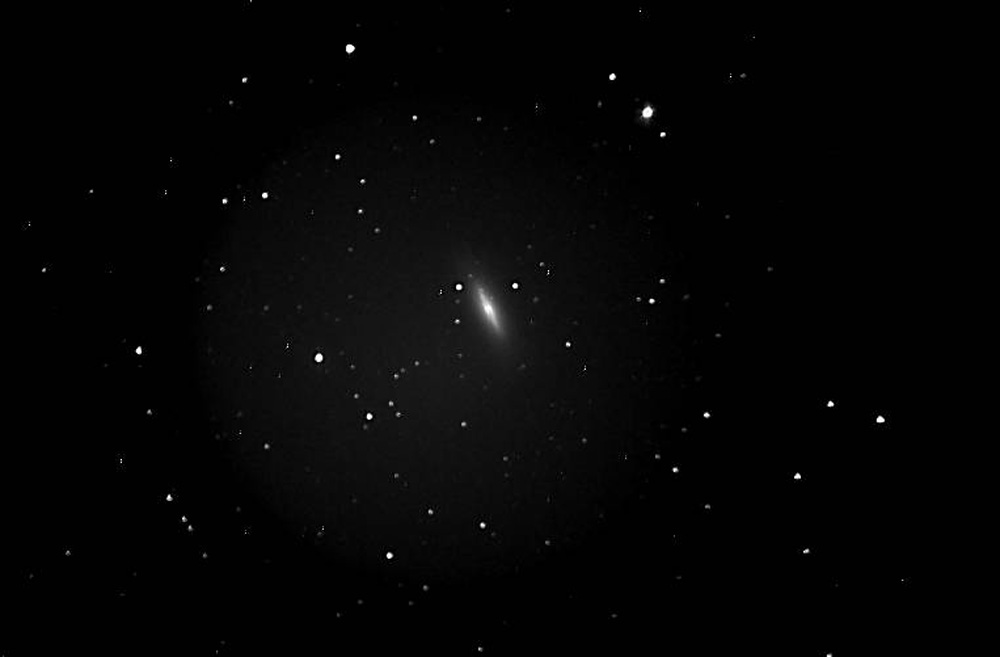M102
M102 is one of the most controversial objects in Charles Messier's catalog because it is not at all clear just what he was looking at. Messier 102 has been considered a "missing" Messier Object for a long time. In semi-recent publications, this entry in Messier's Catalog has been frequently taken for a duplication of the preceding one, M101. However, historical evidence tends to favor the view that M102 is identical to the galaxy NGC 5866.
French astronomer Charles Messier compiled his famous "Catalog of Nebulae and Star Clusters" during the years 1758 to 1781 - or 1782 if counting the last additions discovered by his colleague Pierre Méchain, which are contained in most modern versions of the catalog. Contrary to prior and contemporary observers who had a large number of errors (nonexistent objects) in their lists, the entries of his catalog correspond to actual astronomical objects in all cases, perhaps with one exception, his entry number 102. In spring 1781, Messier and Méchain had taken great effort to discover and catalog new nebulous objects. Up to April 13, 1781, Messier had checked the positions of 100 objects. At that time, the deadline was approaching for contributions to the French yearbook, the "Connoissance des temps" for the year 1784, where the catalog was to be published. Therefore, Messier added the last three objects reported to him by Méchain without further verification at the end of the catalog, as No. 101, 102, and 103, with the remark that these were communicated to him "Through Méchain, which M. Messier has not yet observed." The printed version of the catalog contains a position only for M101, while forM102 and M103, only descriptions are provided. However, Messier has added positions for both these objects to the personal copy of his catalog. It remains to remark that there was always consent about the identity of M101 and M103 because of their descriptions, despite an error of 12m or 3deg in RA in Méchain's position for M101, but only M102 became subject of dispute. Messier's description for M102 reads as follows p. 267): 102. Nebula between the stars Omicron Bootis and Iota Draconis: it is very faint, near it is a star of 6th magnitude.
About 2 years after the catalog was published, Mechain claimed that the observation of M102 was an error, a duplicate observation of M101, and a mistake. In May of 1783 he wrote a letter to the Prussian Royal Academy in Berlin, in which he continued his claim of error in the location of this object. The letter was used by others, including Johann Elert Bode, to support the idea that M102 was indeed a duplicate observation of M101.
However, there remain some doubts at Méchain's retraction: First of all, both Méchain and Messier were very careful observers, indicated by the fact that M102 is the only possible "non-object" left in the catalog. Also, the descriptions for M101 and M102 differ notably; that for M101 reads: "Nebula without stars, very obscure and pretty large, between 6' and 7' in diameter, between the left hand of Bootes and the tail of Ursa Major. Difficult to distinguish when graticule lit.
Diam. 7'. " This description varies considerably from that of Mechain, recorded previously. Moreover, there is a celestial object which perfectly matches Méchain's description and that is NGC 5866. Thus, it is possible that M102 could be a member of a small group of galaxies located about 3 degrees SW of Iota Draconis and the brightest of these is NGC 5866. It is the only one bright enough, at 10th magnitude, for the instruments of Messier and Mechain to reach.
I choose to agree with this assessment, and include my photo of NGC 5866 here as M102. Often called the Spindle Galaxy, this object is either a lenticular galaxy or a spiral seen exactly edge-on. It lies about 50 million light years from Earth.
 |
| Taken March 22, 2012, with the C-14 operating at F:3.5 and the ST-8 camera binned 2 X 2. Exposure is 200 seconds. |